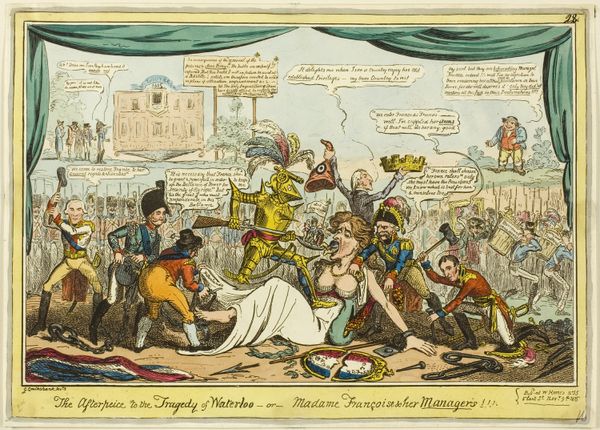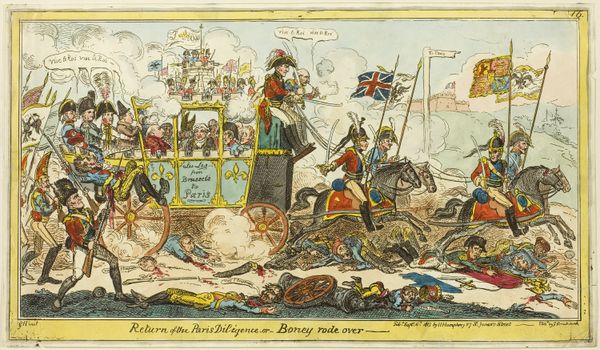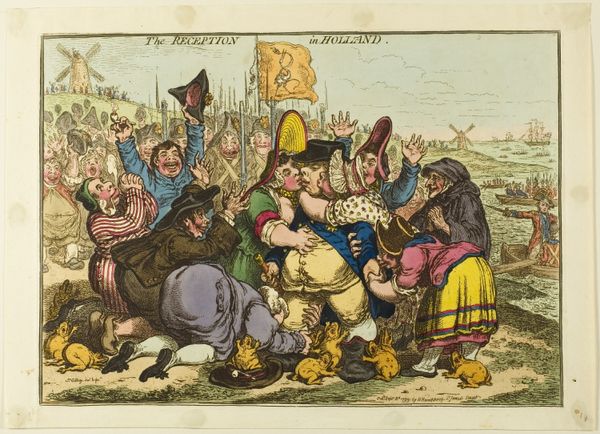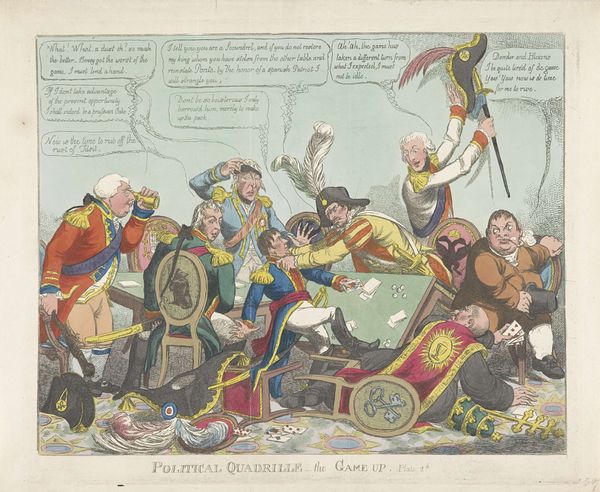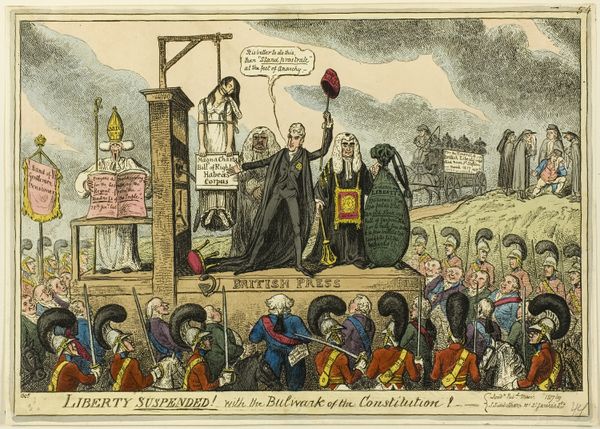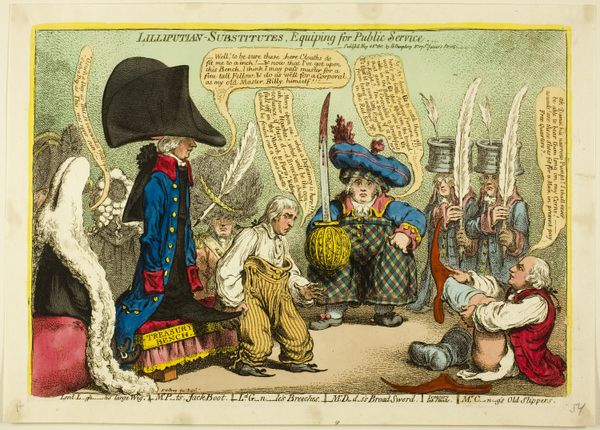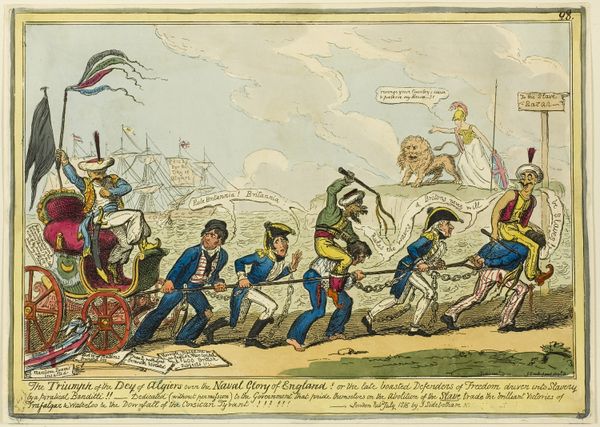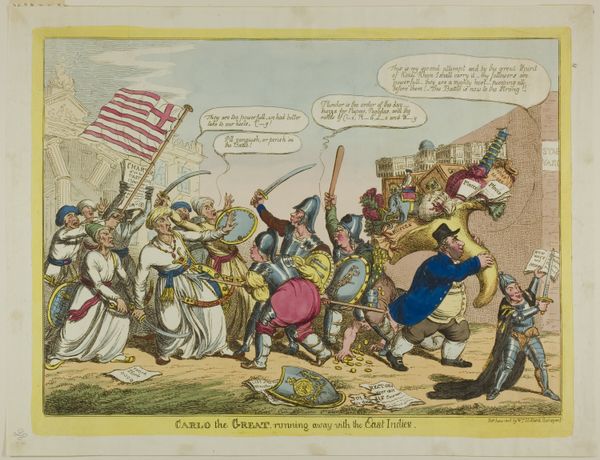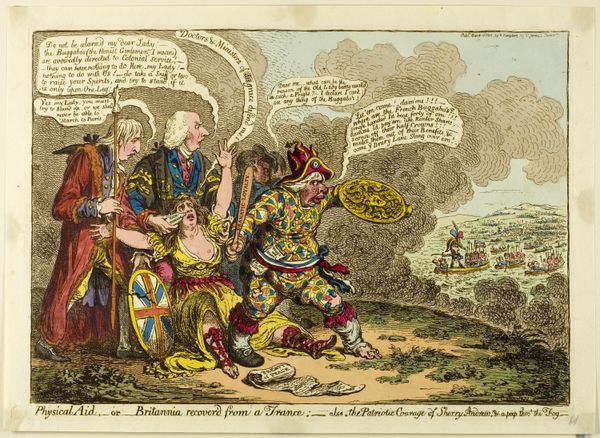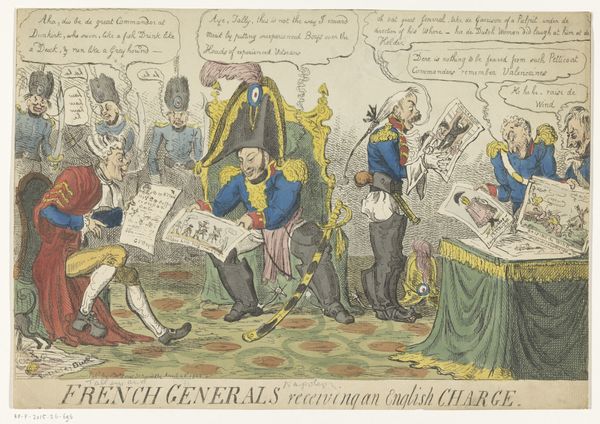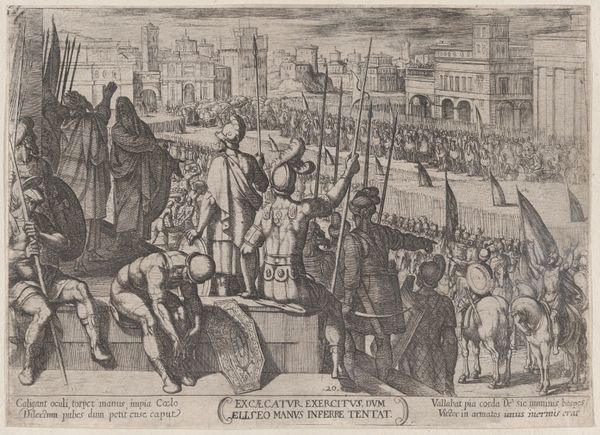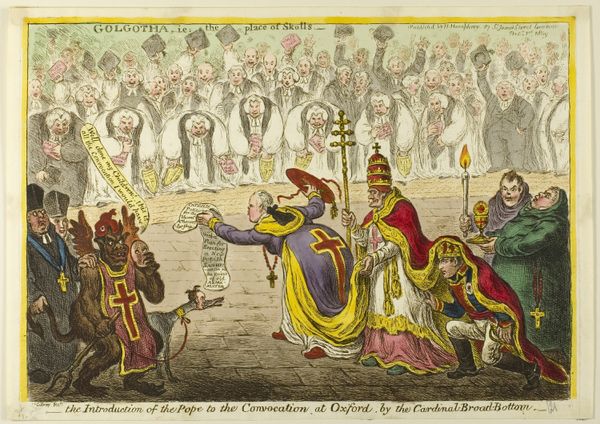
State Physicians Bleeding John Bull to Death!! Possibly 1816
0:00
0:00
drawing, print, etching, paper
#
drawing
#
narrative illustration
#
narrative-art
# print
#
etching
#
caricature
#
paper
#
romanticism
#
history-painting
Dimensions: 257 × 370 mm (image); 262 × 375 mm (plate); 268 × 380 mm (sheet)
Copyright: Public Domain
Curator: George Cruikshank created this etching, aptly named "State Physicians Bleeding John Bull to Death!!," likely around 1816. It's currently housed here at the Art Institute of Chicago. The scene is so detailed, quite striking. Editor: My immediate impression is one of visceral repulsion. The sickly, almost bilious green hue of the coins and the contorted expression of John Bull – it evokes a sense of societal sickness and economic vampirism. Curator: Absolutely. The color palette does contribute to the overall feeling of unease. But, look closely at the composition: The central figure, John Bull, is rigidly framed by the physicians, whose gestures are almost theatrically exaggerated, focusing on an imbalanced and perverse act of leeching off the populace. This amplifies the grotesque character of exploitation and loss, particularly embodied through satire. Editor: True, but I am struck by the sheer physicality depicted. Notice the tools – the leeches, the buckets overflowing with coins, the instruments and garments of medical authority of the time that signify wealth extraction. These aren't abstract concepts; they are crafted implements performing labor and are very deliberately chosen to underline a message regarding what some might perceive as the literal bleeding dry of the working class by state taxation. The detail embedded in these objects highlights Cruikshank's knowledge and opinions regarding the socio-economic disparities that his world fostered. Curator: An interesting viewpoint, it brings forth some profound themes relating the exploitation through labor by state policies to what they are capable of creating. It creates an intersection between formal elements such as visual cues that make this obvious in line, color, and symmetry and the themes of labor/capital at its finest point. But notice further how Cruikshank's decision to include speech bubbles, almost like theatrical play, heightens that satiric undertone. The formal structure and language interact perfectly to express his dissatisfaction. Editor: Precisely. Through that critical, class-oriented approach and examining the materials present, we reveal a nuanced perspective regarding production in a modern world; one where common labor often loses the majority in wealth distribution and re-circulation, making him victim to the powerful elites. It does make one contemplate where value truly resides. Curator: Indeed. When analyzing the intrinsic design choices along with its socio-economic environment and visual techniques, we may be presented with further details. These methods enrich and broaden a comprehension for both how labor as material gets depicted in art history and to where exactly its creative origins are rooted from, providing deeper meaning and layers to this work of social critique. Editor: And in acknowledging that creative labor—Cruikshank's artistic choices—became part of this socio-political fabric itself, perhaps even empowering some groups to act on their economic conditions in light of what art revealed about society during these earlier historical times. It is a testament to what art, like this print, can accomplish when it gets made and dispersed among the populous!
Comments
No comments
Be the first to comment and join the conversation on the ultimate creative platform.
